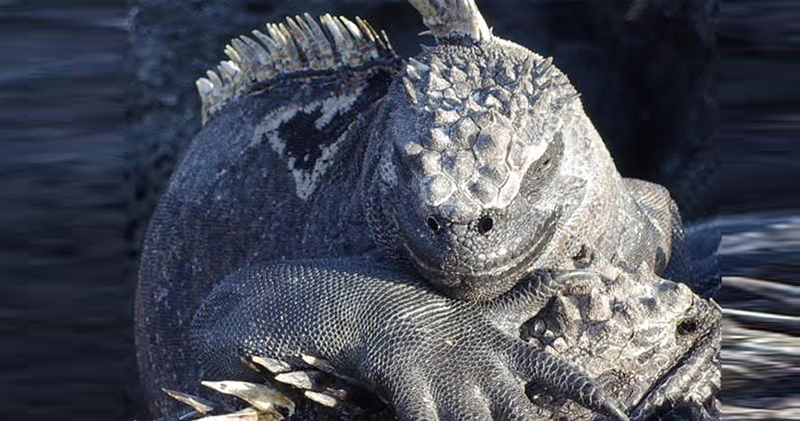My friends are in the middle of a trip to a string of islands off the Ecuadorian coast. I am not going to admit that I thought the Galápagos Islands were in the Atlantic Ocean. Iggy, as they named this unique lizard is a marine iguana. Also known as the sea, saltwater, or Galápagos marine iguana, this species is found only on the Galápagos Islands. Izzy is truly unusual among modern lizards as she forages in the sea, making her a marine reptile. The iguana can dive to find its food source or the smaller animals can feed on algae in the intertidal pools. A few subspecies exist but they appear different and boast different coloration. I believe my friends flew to one of the Islands but it is most likely that Iggy’s ancestors arrived at their remote location by rafting. They are related to the Central American land iguanas – seems they left the mainland as much as 8 million years ago based on DNA type analysis. I felt this was a beautiful creature but in 1798, Captain Colnett of the British Royal Navy wrote. “The iguana’s are small, and a sooty black, which if possible, heightens their native ugliness. Indeed, so disgusting is their appearance, that no one on board could be prevailed on, to take them as food.” although awkward on land they are graceful swimmers. The Captain must have missed the red and green iguana’s and their aquatic skills.
Today most of the 13 major and 7 smaller Ecuadorian islands remain uninhabited with over 97% of the archipelago preserved as a national park. Conservation focus has left one of the world’s most pristine and unspoiled UNESCO World Heritage Sites nearly untouched. The attraction to the island is multiple endemic species – those that cannot be found anywhere else in our world. The flightless cormorant, the Galapagos Flamingo, Penguins, Darwin’s finches, Marine Iguanas, and more. I want to go and see the amazing blue-footed Booby. The bird really has turquoise blue feet and is known for its spectacular dives into the water and their mating ritual that features a stampy-feet dance and pose known as “skypointing.” I have not even talked about the Giant Galapagos Tortoise. They live over 100 years on average and grow to over 4 feet and 475 pounds. Evidence suggests the tortoise arrived on the islands about 3 million years ago.
Amazing how much I did not know about this fantastic volcanic venue. I am actually looking forward to the home movies I trust my traveling friends are taking. This topic was all inspired by a picture of a prehistoric lizard that still lives today. Never too late to learn more. What topic will catch your attention this week?
I failed to mention Charles Darwin and the concepts of natural selection and evolution that were inspired by the diverse Galapagos population. Darwin landed on the islands after a four year voyage on the HMS Beagle in 1835

